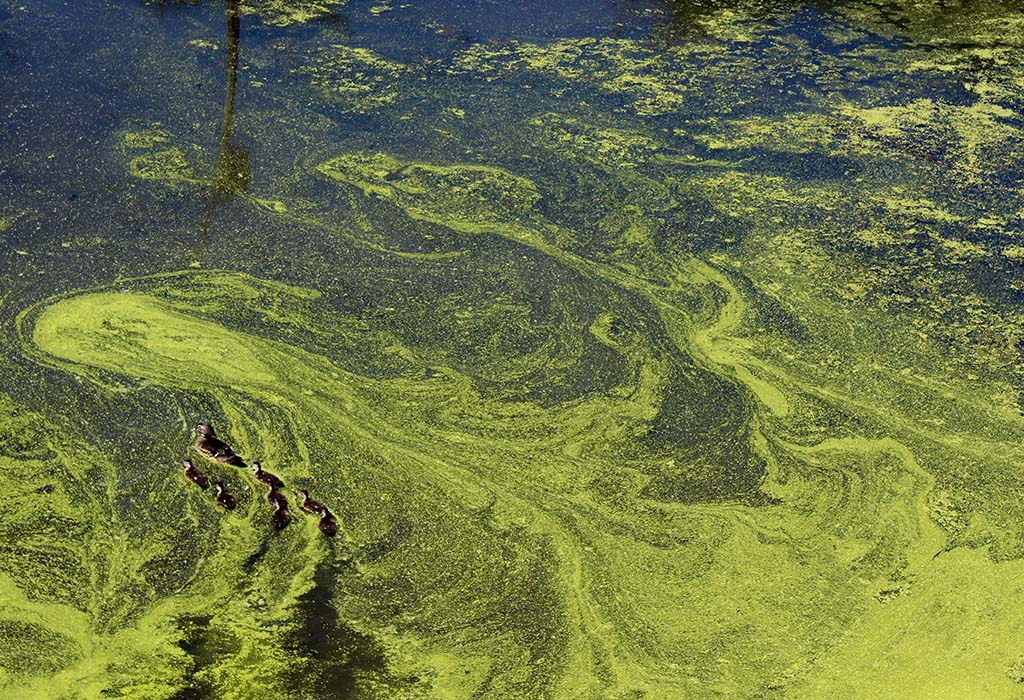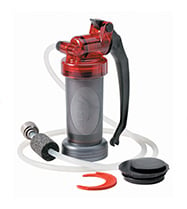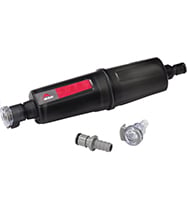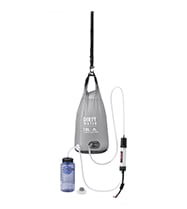What Hikers Should Know About Toxic Algae Blooms
You may or may not have heard of toxic algae blooms. If you have, it may have been something related to local beaches, including warnings not to swim or harvest any shellfish. But these potentially deadly occurrences affect inland fresh water as well, including sources used by hikers for drinking. In 2022, Pacific Crest Trail thru-hikers may have been sickened by toxic cyanobacterial blooms. So how can you tell if a water source has been rendered dangerous by algae? And if it has, what, if anything, can you do about it?

What are Toxic Algae Blooms?
Also called blue-green algae, cyanobacteria are found in salt, fresh and brackish water. These simple, plantlike organisms aren’t always toxic, but under certain conditions, including abnormally warm weather or pollution, they can grow out of control into a ‘bloom’, where they can release toxins and/or harmful gases. And unfortunately, with the warming climate, these blooms are on the rise across the world.
How Can You Tell if Water is Toxic?
When an algae bloom (also called HABS, or Harmful Algal Blooms) occurs, there is no way to visually tell that it is toxic. According to the CDC, some signs to look for include:
- Changes in the water’s color to green, blue, brown, red, or another color.
- Foul odors coming from the water.
- Foam, scum, algal mats or paint-like streaks on the water’s surface.
- Dead fish or other creatures on the shore.
If any of these signs are present, your best bet is to play it safe and avoid contact with the water, including wading, swimming, drinking or even playing near the water’s edge. Sometimes a scum is floating on the surface of the water, but toxic algae can be submerged with no visible surface presence.
What are the Symptoms?
Symptoms of illness from exposure to the toxins vary depending on the level of exposure and can include vomiting, diarrhea, stomach pain, dizziness, and skin, nose, or throat irritation. Dogs and other animals can also be sickened and even die from significant exposure, so make sure to keep your furry friends out of potentially contaminated water, no matter how badly they want to swim.
Can You Safely Remove Cyanotoxins?
Under normal circumstances, you should avoid contact with potentially compromised water, period. However, if you’re in an emergency or survival situation and you have no other drinking source, what do you do? We asked the MSR water research lab if any MSR water treatment device can render water with cyanotoxins safe to drink. The answer is: it’s complicated.
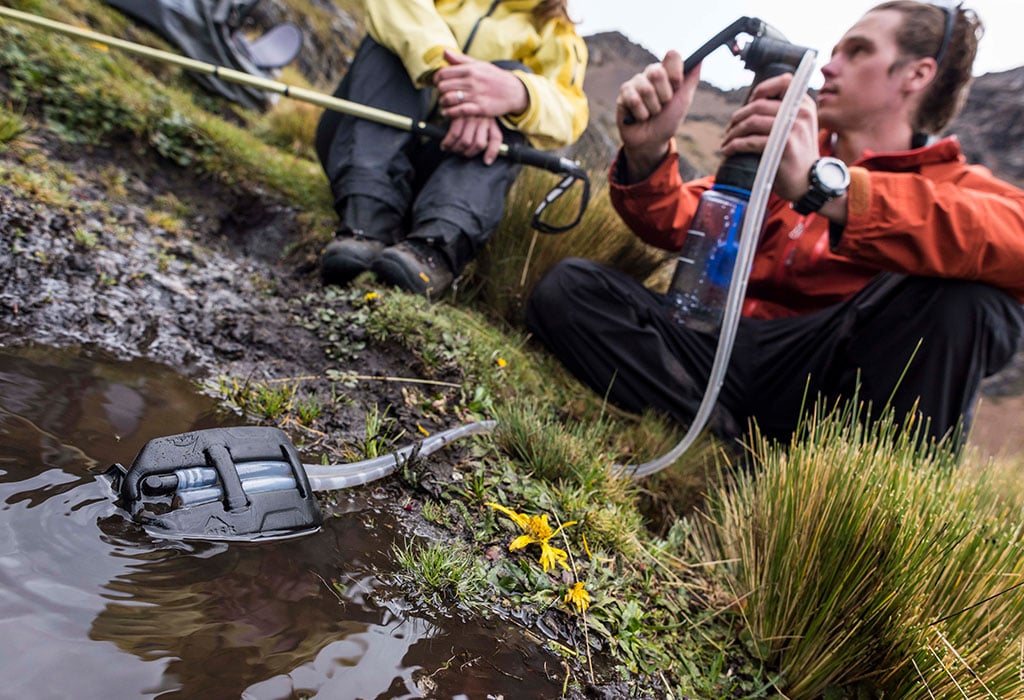
A Two-Step Process
According to Kevin Weitz, manager of the water lab, no MSR filter or purifier can be said to reliably eliminate cyanobacteria toxins. However, according to an EPA report the toxins can be managed with a combination of activated carbon and chlorination. “If I were stuck in a pinch without bottled water,” Weitz said, “I would first filter the water through an MSR Miniworks® EX filter and then treat the filtered water with Aquatabs® chlorine tablets.” He noted that the order of treatment is very important. “If you do the reverse of that process, the chlorination [from the Aquatabs] can promote the formation of additional toxin in cyanobacteria and then release those toxins,” he cautioned.
He explained that the MiniWorks is the best filter choice because it contains a carbon block, which provides the best removal out of all MSR carbon-containing filters. It is available alone or as a purifying system with included Aquatabs. However, the Thru-Link™ Inline filter and Guardian™ Gravity purifier are options as well, as both contain activated carbon to remove chemicals, tastes and odors.
If you do use a filter to treat water with toxic bacteria, Weitz advised that “you would want to do perform frequent cleanings in order to avoid cyanobacteria death and subsequent release of toxins while the bacteria are still trapped on the filter element,” which can recontaminate the water you’re trying to filter.
What About Purifiers?
While a purifier will not remove the toxins, algae will not ruin your purifier. The toxins can be flushed out of it with clean water. Follow the filter cleaning instructions after your trip to kill any surviving algae that you may have trapped on your filter when processing algae-contaminated water.
The Bottom Line
Weitz emphasized that this is not a process MSR can guarantee—“This is only what I would do in an emergency situation.”
 Ashley Brown
Ashley Brown

